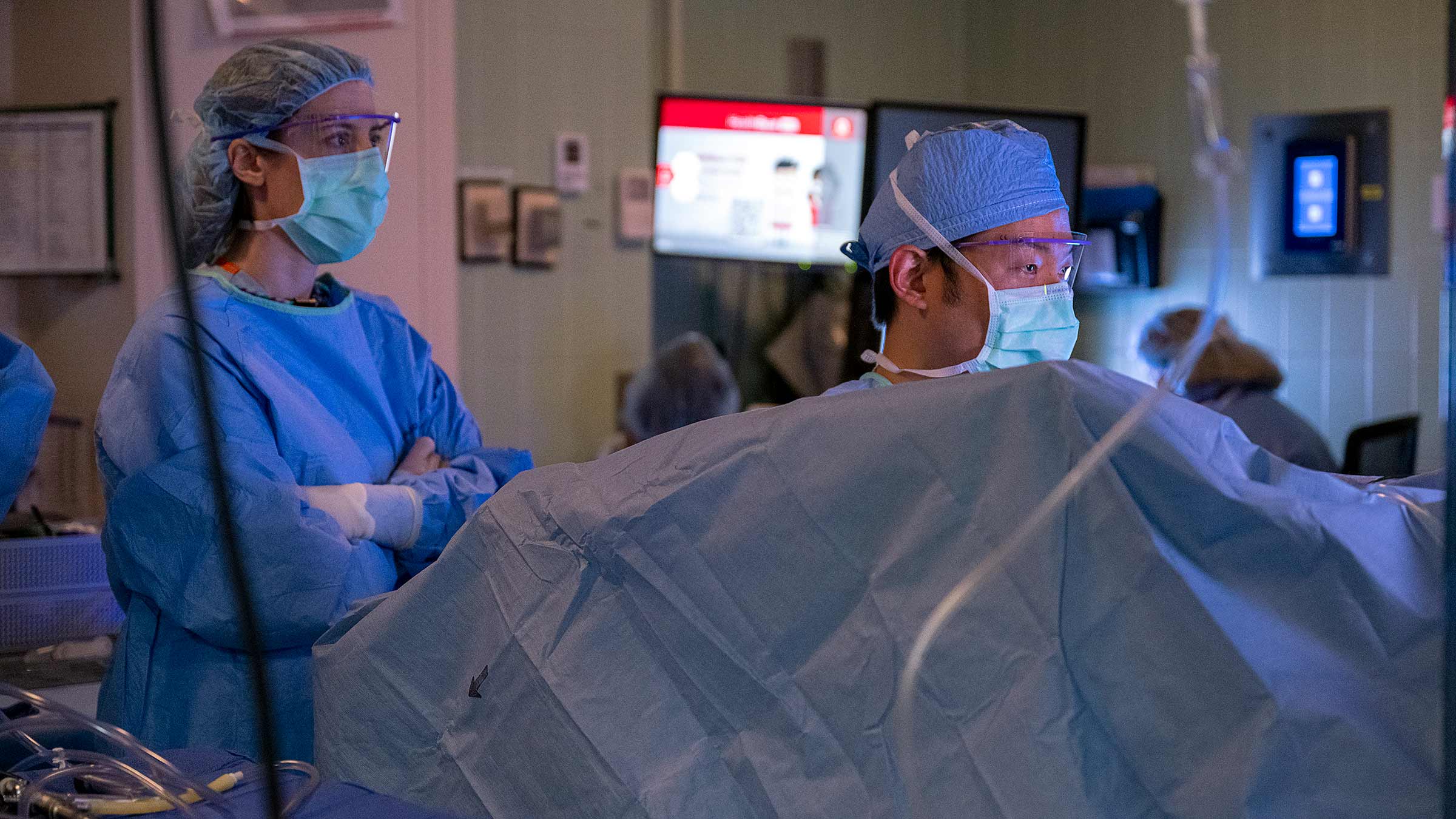Advanced, minimally invasive procedure a boon for patients with enlarged prostates

When Art Signore started having trouble urinating at age 83, he decided quickly to seek treatment.
His timing was fortunate. He saw urologist Michael Sourial, MD, at The Ohio State University Wexner Medical Center, who diagnosed an enlarged prostate — and informed him that a new, better way of treating the condition would be available soon.
Shortly thereafter, Matthew Lee, MD, joined the staff, bringing with him expertise in a procedure known as holmium laser enucleation of the prostate (HoLEP). The technique is widely considered to be superior to the more common transurethral resection of the prostate (TURP) for treating urinary blockage due to benign prostatic hyperplasia.
But it’s a difficult procedure to master — one estimate suggests a surgeon needs to perform the surgery about 50 times to become proficient at it. Dr. Lee learned the procedure during a two-year fellowship at Northwestern Medicine in Chicago, performing more than 350 HoLEP procedures, before joining the staff at Ohio State.
Fewer than 10 surgeons in Ohio perform the procedure.
Dr. Lee performed the minimally invasive procedure on Art in 2022, and the results were immediate.
“It worked tremendously,” says Art, of Columbus. “It’s just an amazing thing. It was over like nothing happened.”
With HoLEP, a surgeon goes in through the penis with a camera and uses a precise laser to cut into the enlarged prostate, with no exterior incisions.
“It is a superior surgery,” Dr. Lee says. “You’re going to get a more durable result, because if you leave behind bits and pieces of the inside of the prostate, typically men may have relief for five years, maybe 10 years, but will need another surgery. But with HoLEP, there’s data going around 18 years now that show the re-treatment rate is around 1%.”
Dr. Lee, who performed about 70 HoLEP procedures in his first six months at Ohio State, says that, overall, “the feedback has been overwhelmingly positive.”
An additional advantage: Ohio State purchased a MOSES 2.0 holmium laser, which first became available in 2020. Because of its advanced capabilities, patients see reduced surgery time and bleeding.
Patients can often go home the same day of the procedure.
For Art, the entire process was a success.
“I couldn’t believe how easy it was,” he says. “If anyone’s interested in having this procedure, I’d recommend it.”

We're driving breakthrough health care solutions to improve people’s lives
The Ohio State University Wexner Medical Center is continuously setting the standard for world-class care.
Learn more



